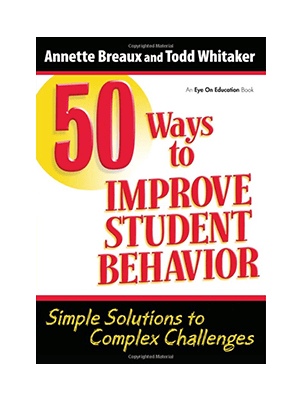Icebreaker games are an essential part of any middle school gathering. They’re a great way to help students break the ice, foster a sense of community, and create an atmosphere of fun and excitement.
Whether it’s the first day of school, a team-building activity, or a social event, these games can make the experience more enjoyable for everyone involved. Heck, sometimes your kids just need brain breaks, right?
In this blog post I’ll explore a wide range of engaging icebreaker games specifically designed for middle school students. From energetic physical games to thought-provoking activities, I’ve compiled a comprehensive list to suit various group sizes and preferences so you can find the perfect activity for the entire class.
*Side note: this isn’t to say you can’t use some of these with younger students or high school students. You just might have to adapt them a little. I actually teach older students and they also enjoy any ice breakers that don’t involve them just saying a few things about themselves like they do in all their other classes.
So, let’s dive in and discover some fantastic icebreakers that will get the party started and help your students connect with one another!
Activities and Games
1. Tennis Ball Toss
Divide the students into pairs or small groups and provide each group with a tennis ball (you’ll need quite a few tennis balls obviously, or you can have a few groups going at a time). Instruct the groups to stand a certain distance apart.
The objective is to toss the tennis ball back and forth, gradually increasing the distance with each successful catch. To add an extra challenge, you can introduce variations like catching with one hand, catching behind the back, or incorporating creative body movements.
This game promotes hand-eye coordination, teamwork, and builds trust among the participants. Want to take it up a notch? Have them answer open-ended questions after they complete the catch to stay in the game.
2. Beach Ball Questions
Write a variety of icebreaker questions on different sections of a beach ball using a permanent marker. Gather the students in a circle and toss the beach ball to a random participant.
The person who catches the ball must answer the question that their right thumb lands on. After answering, they toss the ball to another participant, who repeats the process.
This game encourages communication, active listening, and allows students to learn more about each other in a relaxed and enjoyable way.
Some questions can be simple, like their favorite color or favorite song to keep things moving, or harder questions if you want to push them.
3. Deserted Island Survival
Imagine that the students are stranded on a deserted island. Divide them into small groups and provide each group with a list of items they can choose to have on the island.
The items can range from practical (rope, water bottles) to imaginative (a magical book, a guitar) depending on how much time you have. Each group must discuss and agree on the items they would bring and justify their choices.
This game encourages teamwork, critical thinking, and creative problem-solving while allowing students to explore their resourcefulness and decision-making skills.
It’s a fun team building activity, and you could incorporate some technology if you want by making them create some Google Slides and present to the rest of the class.
4. Scavenger Hunt Adventure
Organize a scavenger hunt that takes students on an adventure around the school or a designated area (I teach older kids, but I use it as a way to introduce them to the library during the first days of school).
Create a list of items, riddles, or clues that the students must find or solve to proceed to the next step. The items or clues can be related to the theme of the event or customized to suit the interests of the students.
Divide them into teams and provide each team with a copy of the scavenger hunt list. The team that completes the hunt and gathers all the items or solves all the riddles first wins.
This game encourages teamwork, problem-solving, and exploration while adding an element of excitement and competition to the icebreaker activity.
5. The Emotion Express
Create a train-like formation with chairs, with one chair at the front representing the engine. Each chair represents a different emotion (e.g., happy, sad, excited, angry, surprised).
Play some music and have the students walk around the chairs. When the music stops, they must quickly find a chair and embody the emotion associated with it.
After a few rounds, invite students to share why they chose a particular emotion and how it relates to their own experiences.
This activity encourages emotional expression, empathy, and understanding of different perspectives.
6. Collaborative Art Wall
Designate a large wall or bulletin board as a collaborative art space. Provide art supplies like markers, crayons, and sticky notes.
Encourage students to express themselves through drawings, writings, or quotes related to a specific theme or prompt. As students contribute to the art wall, it becomes a visual representation of their thoughts, interests, and creativity.
This activity promotes self-expression, community building, and appreciation for diverse perspectives.
7. Storytelling Circle
Form a circle with the students and provide them with a small object, such as a stuffed animal or a unique item. The first student begins a story by incorporating the object into their narrative.
They pass the object to the next student, who continues the story, adding their own twists and turns. The object continues to circulate around the circle, and each student contributes to the evolving story.
This activity encourages creativity, collaboration, and listening skills while fostering a sense of collective storytelling.
8. Puzzle Piece Reflections
Give each student a small puzzle piece and instruct them to decorate it with symbols, colors, or images that represent a personal aspect of their identity, values, or aspirations.
Once the pieces are decorated, have students share their puzzle pieces and explain the meaning behind their designs. Then, challenge them to connect their puzzle pieces to create a larger, unified puzzle.
This activity promotes self-reflection, appreciation for diversity, and the realization that individual pieces come together to form a greater whole.
9. Reverse Charades
Put a twist on the classic game of charades by reversing the roles. Instead of one person acting out a word or phrase while others guess, have the entire group work together to act out while one person guesses.
This cooperative version encourages teamwork, communication, and creative problem-solving. It also allows for a more inclusive experience, as everyone participates simultaneously.
10. Human Knot
This classic ice breaker game is a perfect way to encourage teamwork and communication. Have your students stand in a circle, shoulder to shoulder.
Instruct them to reach out with both hands and grab the hands of two different people across from them. The objective is to untangle the “human knot” without letting go of each other’s hands.
The challenge creates a fun and interactive environment as students strategize and cooperate to solve the puzzle. As the knot unravels, it will help break down barriers and foster a sense of camaraderie among the participants.
11. Two Truths and a Lie
Two Truths and a Lie is a popular icebreaker that allows students to share interesting facts about themselves while trying to guess which statement is false. Have each student come up with three statements about themselves—two true and one false. They can be about hobbies, achievements, or unique experiences.
Each participant takes turns sharing their statements, and the rest of the group has to guess which one is the lie.
This game not only encourages students to get to know each other better but also sparks conversation and curiosity. It’s an excellent way to uncover shared interests and unexpected talents among middle school students.
12. Emoji Story
In this creative icebreaker, students use emojis to tell a story or share an experience. Provide a list of emojis or display them on a screen, and ask each participant to select a few that represent a personal story or situation.
They can either draw the emojis or write them down on a sheet of paper.
Once everyone is ready, invite the students to take turns sharing their emojis and explaining the story behind them.
This game not only allows students to express themselves creatively but also encourages active listening and empathy. As they engage with each other’s stories, they’ll find common ground and discover new perspectives.
This is also a fun way to get new students to make new friends, as it’s a low stress way to get them talking to their whole class or smaller groups, depending on how you run the activity.
13. Name Chain
Name Chain is an excellent icebreaker for larger groups. Have the students stand or sit in a circle, and start by saying your own name, followed by an action that starts with the same letter as your name (e.g., “My name is Sarah, and I like to swim!”). The person to your right repeats your name and action, then adds their own.
The game continues around the circle, with each participant repeating the names and actions of all the previous players. It’s a memory challenge that gets everyone involved and creates a sense of shared accomplishment.
Plus, it’s a lot of fun to see the creativity that emerges as students come up with actions for each name!
It’s a simple game, but one that can be hard on someone like Xavier…just not many options unless they’ve broken a bone.
14. Would You Rather?
Would You Rather? is a popular game that presents players with two hypothetical choices, and they must decide which option they would prefer.
Prepare a list of age-appropriate (and school-appropriate), thought-provoking questions and have students take turns answering them.
For example, “Would you rather have the ability to fly or be invisible?” or “Would you rather visit the past or travel to the future?”
This game sparks lively discussions and helps students explore their values, preferences, and reasoning abilities. It’s a great opportunity for middle schoolers to express their opinions and engage in friendly debates while getting to know each other better.
15. Balloon Stomp
Balloon Stomp is a high-energy game that gets students moving and laughing. Blow up several balloons and tie one to each participant’s ankle using a string.
The objective is to stomp on other participants’ balloons while protecting your own. The last person with an intact balloon wins the game.
This game not only encourages physical activity but also builds resilience, as students use a little critical thinking to avoid having their balloon popped.
It’s a perfect icebreaker for loud classroom areas and can be adapted to different themes or occasions by using colored balloons while having a little friendly competition.
16. Picture Perfect
Prepare a set of intriguing or humorous images and distribute them randomly to each student. Instruct the students to find the person with a similar or related image without talking.
This game encourages non-verbal communication, observation skills, and teamwork as participants search for their picture-perfect match.
17. Group Jigsaw Puzzle
Divide the students into small groups and provide each group with a jigsaw puzzle. The twist is that each group has a different puzzle, and they must collaborate with other groups to gather the missing pieces needed to complete their own puzzle.
This game promotes cooperation, communication, and problem-solving while fostering a sense of unity among the participants.
18. Who Am I?
Have each student write the name of a famous person, fictional character, or historical figure on a sticky note and place it on their forehead without looking.
The objective is to figure out the identity by asking yes or no questions to the group.
This game enhances deductive reasoning, critical thinking, and creativity while providing an opportunity to learn about various personalities.
19. Human Bingo
Create a bingo grid with different statements or descriptions, such as “Has traveled to another country” or “Plays a musical instrument.” Students must mingle and find classmates who match the descriptions, asking questions to fill their bingo grid.
This game encourages social interaction, active listening, and discovering shared interests among the participants.
20. Back-to-Back Drawing
Pair up the students and have them sit back-to-back. Give one person in each pair a simple picture or shape and the other person a blank sheet of paper and a pencil.
The person with the picture must describe it to their partner, who tries to recreate it based on the verbal instructions.
This game promotes clear communication, active listening, and teamwork while resulting in hilarious and creative drawings.
21. Marshmallow Tower
Provide each group of students with a packet of marshmallows and toothpicks. Their task is to build the tallest freestanding tower using only these materials within a given time limit.
This game fosters teamwork, problem-solving, and spatial awareness while allowing students to unleash their architectural creativity.
22. Secret Handshake
Ask each student to create a unique secret handshake that reflects their personality or interests. Once everyone has developed their handshake, students can pair up and teach their partner their secret handshake.
This game encourages creativity, communication, and strengthens the bonds between students as they create unique greetings.
23. Emoji Charades
Compile a list of popular emojis and write them on separate pieces of paper. Have students take turns selecting a piece of paper and acting out the emoji without speaking while their classmates try to guess what it represents.
This game combines acting, observation skills, and imagination while creating a fun and engaging atmosphere.
24. Scattergories
Divide the students into small groups and give each group a category (e.g., animals, countries, food). Set a time limit and have the groups write down as many items as they can within their category, starting with a specific letter.
Students receive points for unique answers.
This game stimulates quick thinking, creativity, and encourages friendly competition among the groups.
25. Find Someone Who…
Create a list of statements such as “Find someone who has a pet,” “Find someone who can speak two languages,” or “Find someone who has a sibling.”
Students must mingle and find classmates who match the descriptions, striking up conversations and discovering commonalities.
This game promotes social interaction, communication, and helps students find connections with their peers.
Conclusion
Icebreaker games are an excellent way to kick-start any middle school event, fostering connections and creating a positive atmosphere.
The activities mentioned above are just the tip of the iceberg when it comes to fun icebreakers for middle school students. Remember to choose games that align with the goals of your gathering and the specific needs of your students.
Whether you’re aiming to build teamwork, spark creativity, or simply have a great time, these icebreakers will help you create memorable experiences for your middle schoolers.
So, go ahead and try them out, they’re guaranteed to break the ice and set the stage for an exciting and engaging time together!
And who knows, the students might actually show a little excitement when walking into your class as you keep them guessing what icebreaker activities you’ll come up with next.
























